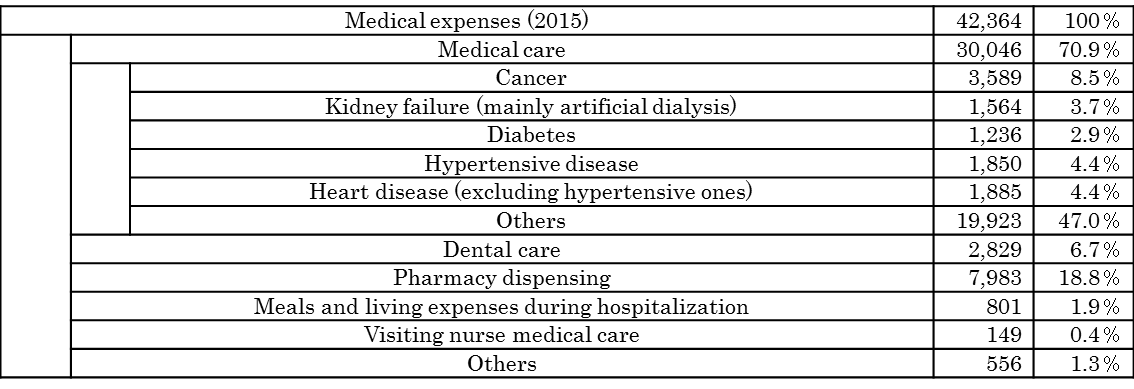Column Finance and the Social Security System 2018.01.19
【Aging, safety net and fiscal crisis in Japan】No.8: Composition of Medical Expenses
Table 1 shows the composition of medical expenses in Japan (excluding long-term care) by type of medical treatment in 2015. Cancer-related medical expenses are as high as 8.5%. The number of cancer patients climbed from 331,000 in 1985 to over 1 million in 2016. This reflects an increase in the elderly population with associated higher cancer incidences.
Table 2 shows the funding composition of medical expenses. The ratio of public expenditures to medical expenses rose from 33.2% in 2000 to 38.9% in 2015. Approximately one-third of total general revenues for fiscal 2017 were covered by loans such as government bonds. Therefore, it will be difficult to continue financing the healthcare system if the government is no longer able to issue bonds at the current low rate.


